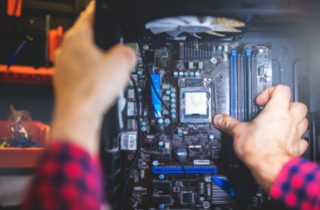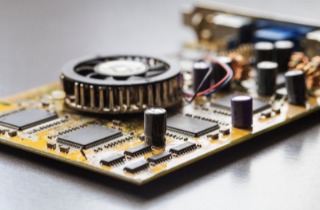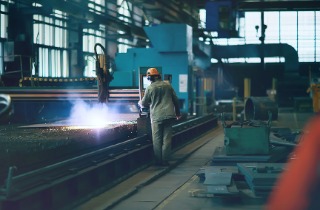How ITOne helps with Hyper Automation to enhance your Digital Transformation?
Tech Insights | 01 October 2022
Hyper Automation is a business-driven, disciplined approach that organisations use to identify and automate as many businesses and IT processes as possible.
The goal of Hyper Automation is to significantly automate business and IT activities. Its ultimate objective is to create a mechanism for automating enterprise automation. Hyper Automation is a framework and collection of cutting-edge technologies for growing automation in the organisation.
Utilizing cutting-edge technologies, techniques, and tools, ITOne’s managed IT infrastructure management services assist businesses in maintaining and enhancing the performance and availability of their production environments.
Hyper Automation involves the orchestrated use of multiple technologies and platforms, including:
● Robotic Process Automation (RPA)
● Artificial Intelligence (AI)
● Machine Learning
Identified by Gartner as one of 2020’s top 10 strategic technology trends, Hyper Automation makes nearly any repetitive action carried out by business users automatable by combining AI tools with RPA. Gartner also states that adopting Hyper Automation has become a matter of survival for enterprises today.
Problems with current workforce practices: Outdated manual work processes.
Pandemic actually accelerated the growth and adoption of Hyper Automation across multiple industries.
Digital Transformation through Orchestration:
RPA becomes the primary enabling technology for Hyper Automation when it is enhanced with AI and ML. The ability and flexibility to automate undocumented procedures that depend on unstructured data inputs is made possible by combining RPA and AI technology.
Steps to implement Hyper Automation
I. Research
– Learn about already existing manual operations and processes within organisations and then develop a plan to automate these processes. This process is also known as “Digital Twin.” Furthermore, test the digital twin and then replace the manual process with the digital twin.
Digital Twin: A virtual depiction of an item or system called a “digital twin” spans its entire lifecycle, is updated using real-time data, and combines simulation, machine learning, and reasoning to support decision-making.
II. Data Inputs
– Once the digital twin is implemented, collect input data from all the sub tasks of individual processes and feed them to the digital twin.
III. Time and Money
– The main aim of adopting Hyper Automation or any such technology for an organisation is to earn revenue. Success can be measured using metrics such as time and money. Hyper Automation’s success can only be applauded if it has increased the efficiency and return on investment for any organisation.
IV. Utilising existing technologies
– Making use of existing technologies like RPA, OCR (Optical Character Recognition), NLP (Natural Language Processing) to fit them into your Hyper Automation stack if possible to optimise the use of all resources.
V. Enhance Automation
VI. Low code/ No code UI
– Ensure that the Digital Twin or the Hyper Automation stack built is user-friendly and consists of a low code or no code user interface. This means that even the non-technical employees and clients can understand and use the interface easily and efficiently.
Business Benefits of Hyper Automation
ITOne and AutomationEdge collaborate to assist clients in modernising their operating procedures for increased productivity and cost reduction through Robotic Process Automation.
1. Accelerated Transformation: 63% executives have told that Hyper Automation, specifically RPA, is a major boon to digital transformation.
2. Cost Effective: Brings rapid and significant improvement to business metrics across industries.
3. Accuracy: 57% business executives say that RPA reduces manual errors.
4. Productivity: Globally, 68% of workers said Hyper Automation has increased their productivity.
5. Satisfied taskforce: RPA enhances employee engagement, according to 57% of executives.
Application of Hyper Automation Technology
– Hyper Automation can help the healthcare industry by providing faster and accurate data, better patient experience and a stronger bottom line. Patient records, billing cycles and registration processes can be automated.
● Supply Chain
– Using Robotic Process Automation (RPA), inventory stock checks can be performed frequently to prevent stock outs and ensure product availability at all times.
● Banking
– For the banking and finance sector, Hyper Automation can help cut costs and improve efficiency and customer experience. This technology can provide higher data quality to help customers make more informed decisions.
Future of Hyper Automation
This technology has a positive snowball effect on all business operations spanned across multiple industries around the globe. It improves business outcomes and helps you get a competitive edge by providing valuable services such as problem solving, decision making, and analysing data to name a few.
Automation is evolving from solutions that increase productivity and efficiency to an agent of change that fundamentally changes how enterprise functions by increasing productivity and looking for new ways to address the changing needs of the market in order to create the solutions and services of the future. As digital transformation becomes essential for adapting to the new normal, Hyper Automation is becoming a necessity.
Have a look here for more detailed reports and information.




















